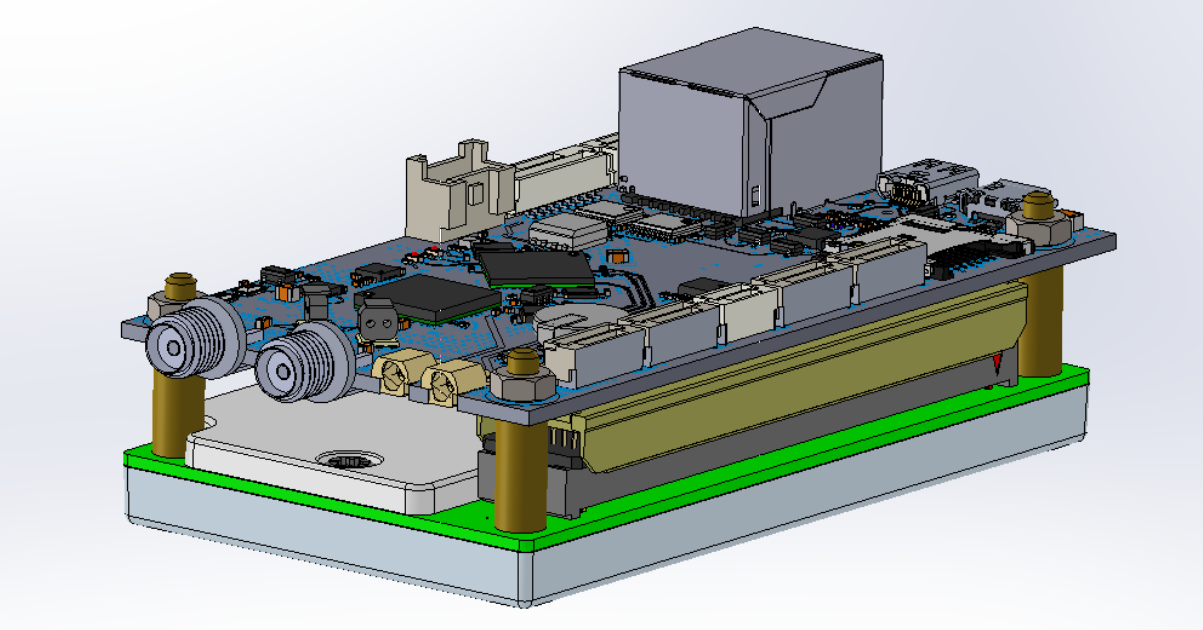Radio hacker’s arsenal: RTL-SDR broadband replacement up to 6 GHz
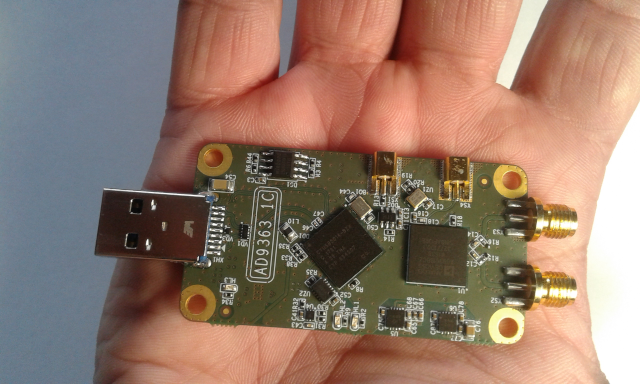
Recently I read an article in which the author prophesies us a cheerful but bright future. Among other things, he says literally the following: “If we can’t do anything with the fact that the state is watching us, we should have the right to monitor it.”
Wonderful thesis! Give the race of radio weapons!
In legal matters, I have nothing to offer, but in terms of technology, you can make your small fraction. The point, of course, is not only in the radio. There are many other informational and technical means that one must possess for such surveillance. I will focus on radio technical, as it is closer to me by profession.
You may have already read about demons and Robinhoods . Continuing the work in this direction, I want to tell you about the new SDR receiver card.
It is built on the well-known AD9363 single-chip transceiver (4) and CYUSB3014 USB3 controller.
Someone will want to throw me stones for inventing bicycles. If you read to the end, then you are welcome.
The purpose of the board is to create a receiver with the following properties:
- compact SDR receiver;
- simple circuit design;
- low consumption;
- wide range of frequencies;
- integration with a symmetric antenna;
- large reception band;
- external reference frequency and synchronization input;
- GNURadio support.
The first three points were made possible by the ability of CYUSB to receive data from complex sources. Thus, we can get rid of FPGA on the output interface of the transceiver chip. The AD9364 with Dual Port Full Duplex mode provides data, clock, and the FRAME signal, by which the quadrature components of the output digital signal are synchronized.

Timing charts:
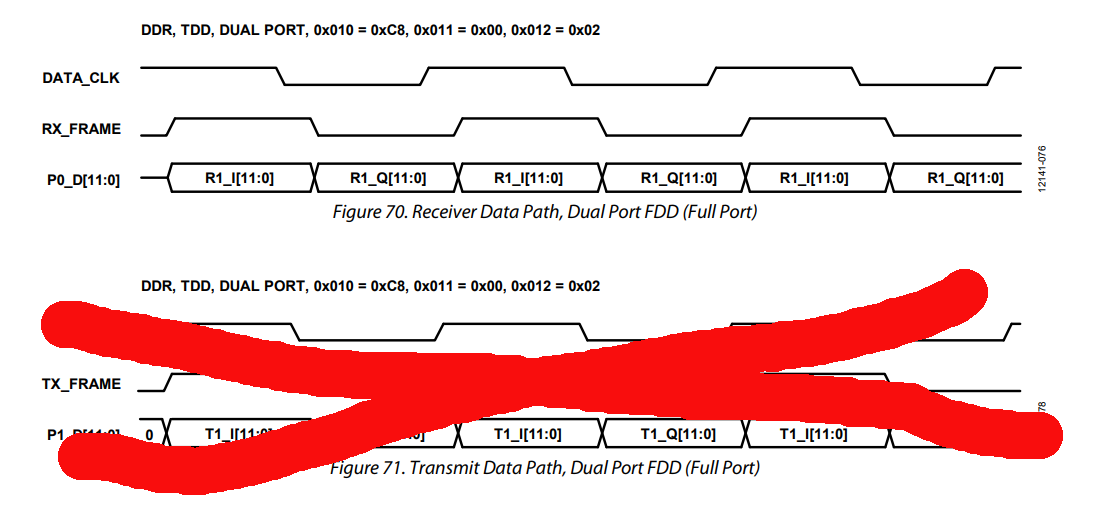
Fortunately, the GPIFII interface of CYUSB3014, with a certain setting, can rely on the FRAME signal to synchronize the quadrature components. It is only necessary to get it into the GPIFII scheme and make it wait for the first front of the FRAME and then no longer pay attention to it. In the GPIFII state diagram, it looks like this:

The transmitting path of the transceiver is turned off, we need only the receiver. It cannot be brought directly into CYUSB, as there is a bug in the controller, which manifests itself only when working in transmission and which can only be fixed with the help of FPGA.
The scheme is very simple:
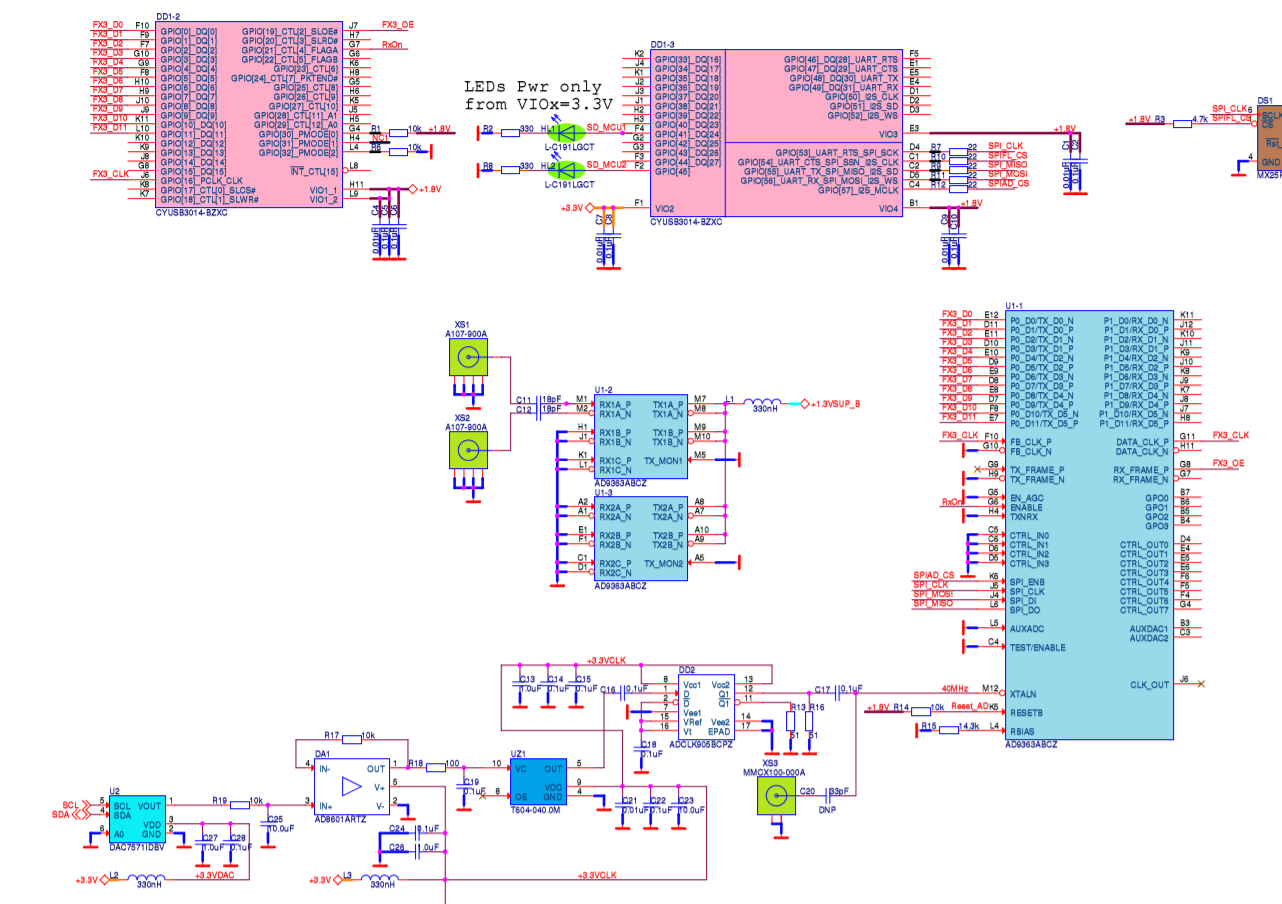
The fourth point, a wide range of frequencies, is provided by the transceiver itself. And we do not interfere with it - we do not install any transformer there. It's wonderful, but in this way we get the opportunity to connect a symmetrical antenna directly to the receiver input. It is always possible, donating characteristics, to put 50 ohms in one shoulder and connect a conventional antenna.
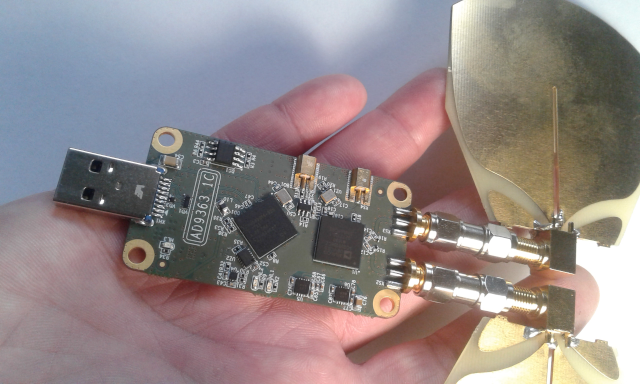
A large reception band is provided by a USB3 interface. The CYUSB3014 controller achieves a data transfer rate of 400 MBytes / s, which corresponds to the 100 MHz bandwidth of a 16-bit quadrature signal. This is even more than the receiver can give out.
The connectors of the external support and synchronization are made on the side, they did not fit on the front edge. External synchronization connector will be needed for the positioning of interference, which must be monitored.
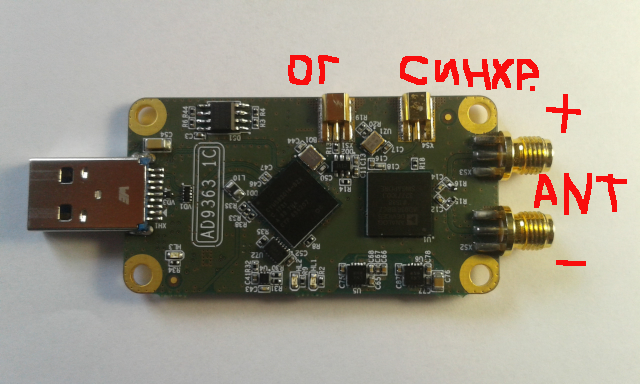
Well, GNURadio support is provided by the hands and head of the programmer. Well, a little ass, of course.Software, see here and here .
The first link is a C ++ library that works with the board through libusb and provides an interface for managing the settings of the AD9364 and entering the samples. The library implements the loading of firmware, the transmission of commands to the registers AD9364 and the acquisition of signal samples.
On the second link, fork GR-OSMOSDR, which simplifies the inclusion of new cards in GNURadio. The Source block for the new board has been added here.
The result is some pictures of the spectrum:
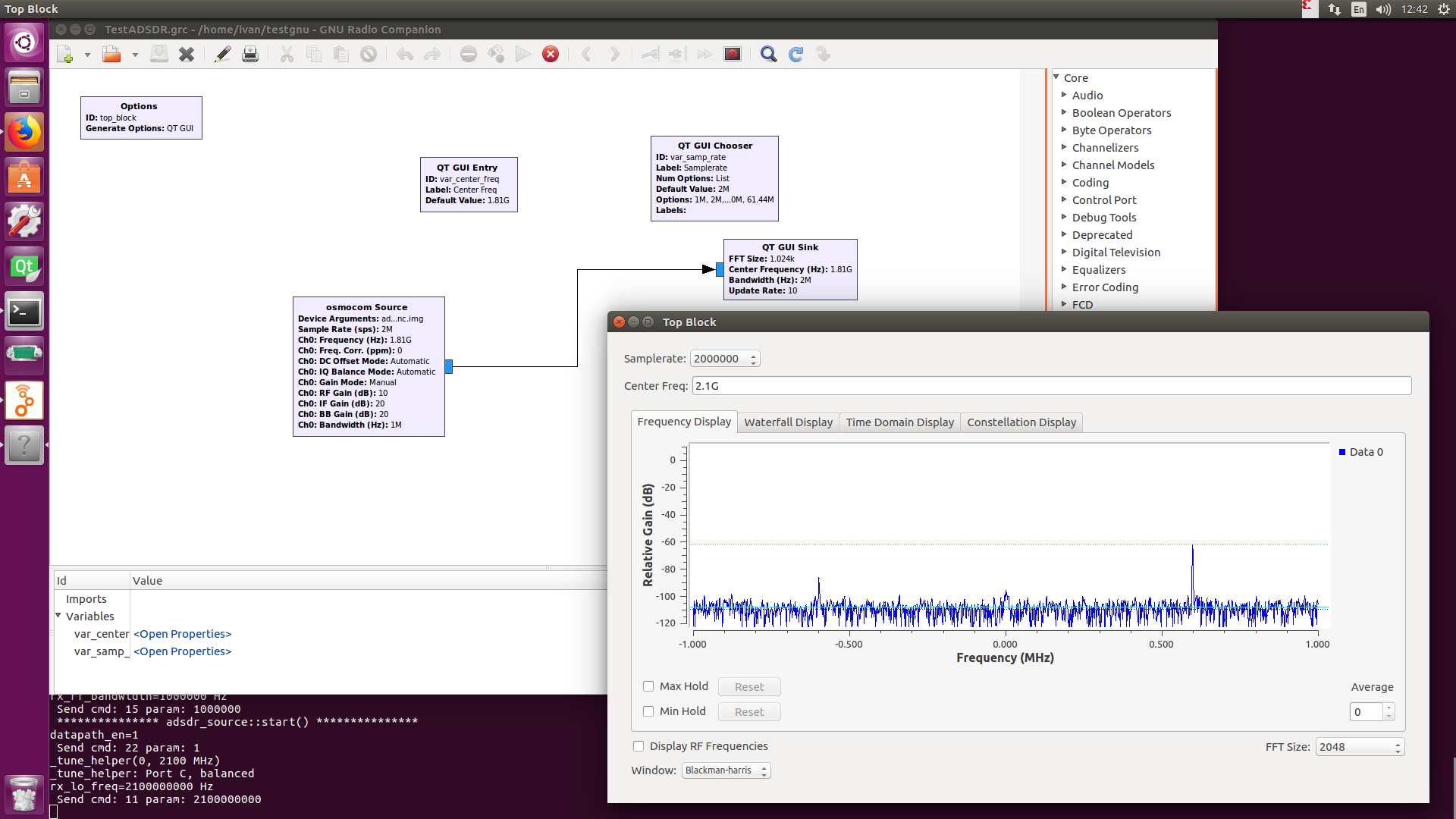
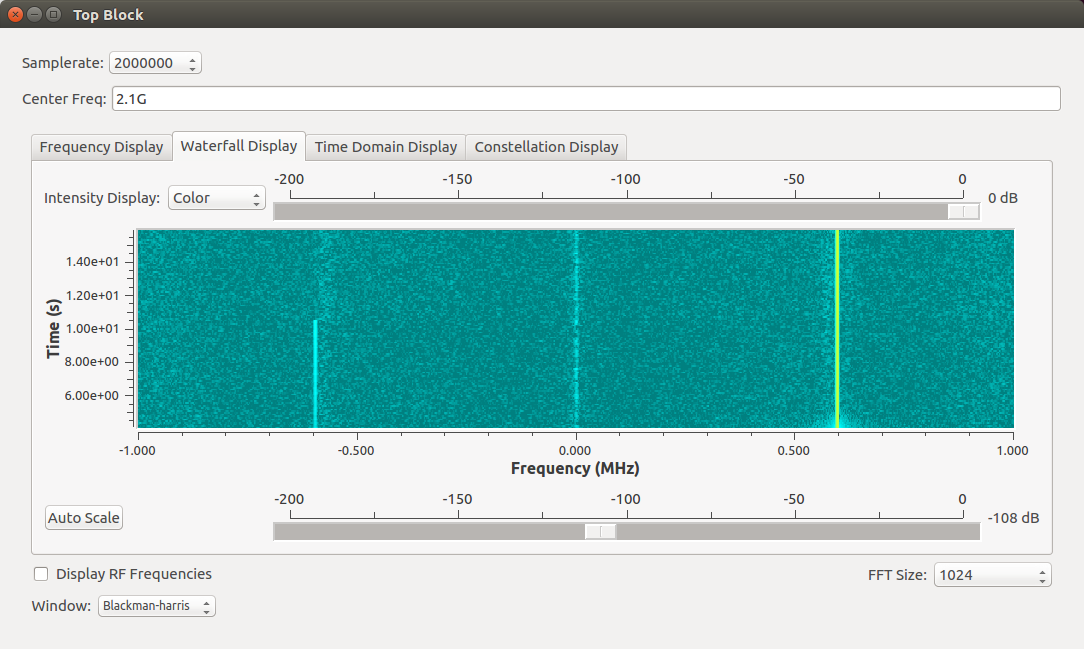
Now you can plug the board into the tablet and monitor the broadcast like this.
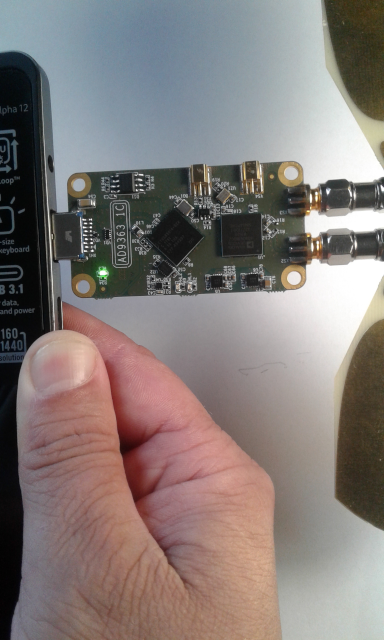
PS Based on the circuitry of this board, an SDR module for Jetson TX2 has now been developed. Next time I will write about him.
